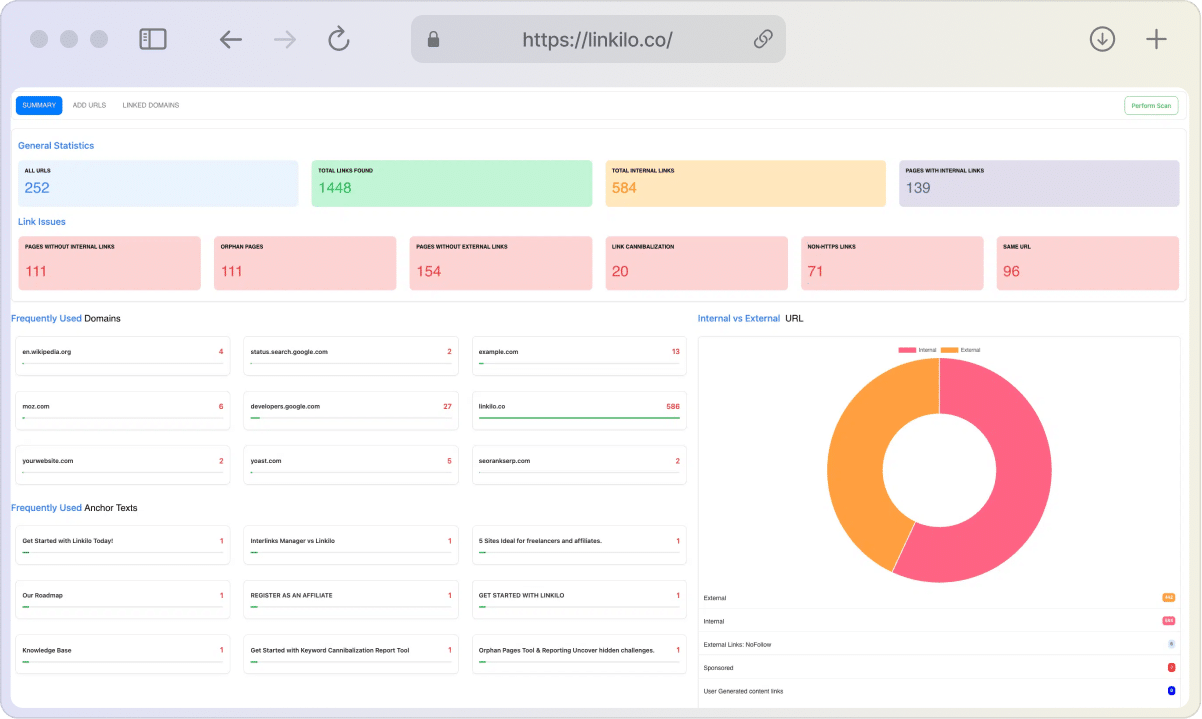Crafting an engaging blog post that lures readers and maintains their interest can be highly rewarding but does require careful maneuvering. The success of your blog lies in evading certain pitfalls that could quickly make readers hit the back button. Let’s explore some of the big “don’ts” in the world of blogging:
Content Quality Missteps
- Thin or Rehashed Content: Offering superficial commentary without depth or new insight provides zero value to the reader. It also negatively impacts search engine rankings. Strive for originality and bring a fresh perspective to your niche topics – even if it requires more research.
- Keyword Stuffing: This outdated, “black hat” SEO tactic involves cramming your post with keywords in an unnatural, repetitive manner. Not only does it make for terrible reading, but it can also result in search engine penalties. Prioritize creating readable content for humans while integrating keywords in a natural and strategic way.
- Ignoring Your Target Audience: Failing to understand the interests, pain points, and language of your audience will make your content irrelevant. Invest time defining your ideal reader. What problems do they face? What kind of information are they hungry for? Write content specifically and intentionally tailored to them.
- Plagiarism: Blatant copying or even accidental mirroring of someone else’s work without proper credit and permission is not only unethical but could lead to legal problems. If you do quote sources, provide correct attribution. Consider plagiarism-checking tools to safeguard against unintentional missteps.
- Fluff and Filler: Rambling text and excessive phrases that serve no real purpose frustrate readers. Make every sentence count; be concise and eliminate extraneous wording. If a detail doesn’t significantly add to the topic or engage the reader, cut it out mercilessly.
Errors That Undermine Credibility
- Factual Errors: Inaccurate information is a surefire way to lose credibility. Meticulously verify your facts. Cite reputable sources, and make sure you properly link back to any research data for reader access. If it’s a matter of opinion, explicitly state it as such to avoid being perceived as misleading.
- Overbearing Promotion: While blogs can be an indirect sales tool, overtly promotional content feels inauthentic and turns readers off. Focus on providing value first and foremost. If content aligns naturally with a product or service you offer, a subtle mention with a clear CTA can be appropriate. Avoid hard-selling at all costs.
- Poor Spelling and Grammar: Typos and grammatical errors make your content appear unprofessional and can even hinder user understanding. Use editing tools like Grammarly and don’t rely solely on your computer’s spell-check. Ideally, have another person proofread your posts as a fresh set of eyes is more likely to catch mistakes.
Formatting and Style Faux Pas
- Walls of Text: Giant blocks of unformatted text are daunting to readers. Break up content with:
- Headings and subheadings for a clear, scannable hierarchy
- Short, punchy paragraphs
- Lists or bullet points for easily digestible information
- Misleading Headlines: Overly clickbait-style titles that don’t match the blog content disappoint readers and hurt your reputation. Write compelling and accurate headlines that entice readers without overpromising.
- Inconsistent Branding/Voice: Whether you’re blogging as an individual or as a business, having a consistent brand voice throughout your content builds trust. If your posts dramatically fluctuate in tone and writing style, your blog will feel disjointed. Keep a style guide handy for reference if several people contribute to the blog.
User Experience (UX) Mistakes
- Slow Page Loading: Users have incredibly short attention spans online. If your blog posts take ages to load, you’ll lose them. Reduce your image file sizes, choose a well-optimized web host, and minimize excessive use of plugins that can bog down your site overall.
- Poor Mobile Responsiveness: More people read blogs on mobile devices than on desktops. Make sure your blog’s layout adapts to a phone or tablet screen seamlessly. If readers have to pinch and zoom to view your content, you’re offering a subpar experience.
- Confusing Navigation: If users can’t easily find older posts, related content, or even search what’s on your blog, they’ll abandon it. Have intuitive menus, and include categories, tags, and a search bar for user-friendly navigation.
- Aggressive Pop-ups and Ads: Yes, some level of monetization might be desired, but don’t overload your blog with annoying pop-ups, banner ads, or autoplay videos that hinder content access. A negative user experience will outweigh any small monetary gain.
Engagement Killers
- Ignorance of Comments: Your comment section is a goldmine. Answer genuine questions, thank readers for their feedback, and encourage discussion. Ignoring comments makes readers feel unvalued and uninclined to come back.
- Absence of Visuals: Text-heavy blog posts feel like unappetizing gruel. Break up your text with relevant and engaging images, illustrations, charts, or even memes when appropriate for your content. Just ensure you are using images you have the rights to, and optimize them for web viewing.
- Neglecting CTAs: Don’t be afraid to ask readers to act. Guide them on what to do after reading your article, whether that’s signing up for your mailing list, sharing the post on social media, or exploring another related blog post.
- Forgetting to Update Older Content: As industry information or trends change, older posts quickly become obsolete. Refresh evergreen content to keep it relevant and to remind search engines to continue crawling and indexing those pages. Also, update any broken links on your site to provide a better user experience.
Additional Oversights that Damage Blog Traffic
- Not Promoting Your Posts: If you hit publish and simply assume people will magically stumble upon your post, you’re setting yourself up for disappointment. Employ the marketing strategies covered in the previous “Marketing Your Blog” article to give your content a launchpad to find its audience.
- Focusing Only on Quantity: Aiming for more frequent publications often leads to sacrificing quality. Readers will pick up on this. It’s better to build a track record of fewer posts that are stellar than frequent but mediocre content that ultimately fails to generate traction.
Tone and Approach Blunders
- Adopting a Negative Tone: While the odd rant can ignite discussions, a recurring negative or overly critical tone will alienate readers. Even when critiquing something, try to be constructive. Keep your focus on aiming for positivity and providing solutions.
- Being Robotic or Impersonal: Especially if you’re blogging as an individual, let your personality shine. Dry, generic content doesn’t connect with readers. Show your humor, quirks, and the fact there’s a real human being behind the keyboard.
- Pretending to be an Expert When You’re Not: Authenticity is key to building trust. Don’t overstate your knowledge, and be transparent if you’re still learning about a topic. There’s value in sharing your journey towards expertise, and readers often connect with learning alongside someone rather than always being “taught.”
- Disrespecting Your Audience: Condescencion, dismissiveness, or insults never win over readers. Even with dissenting opinions in the comments, maintain a professional and courteous tone.
Additional Notes: Avoiding the Extremes
- Too Short or Too Long: Ideal blog length varies and can depend on subject matter. However, too short offers thin value, while excessively long pieces may intimidate readers. While an article like this aims to be an in-depth resource, your average “How-To” post shouldn’t turn into War and Peace. Find a sweet spot. Analyze engagement rates on the length of your current posts to learn from this data. Experimenting and tracking performance helps guide these decisions.
- Too Much Jargon: Overusing niche-specific or complex terminology without explanation leaves non-expert readers in the dark. Aim for accessibility, define specialized terms, or link out to explanatory resources when necessary. This will prevent confusing or intimidating potential readers away.
Key Takeaways: Be Mindful, Stay Committed
The sheer number of things to avoid might seem intimidating at first, but remember that awareness itself is half the battle when it comes to writing quality blog posts. Here’s a recap of the core principles to keep top of mind:
- Quality over Quantity: A less frequent but outstanding post outshines several rushed, mediocre ones.
- Reader First: Know your audience and write compelling content that speaks directly to their needs.
- Accuracy and Credibility Matter: Fact-check yourself and be mindful of what you present as a truth.
- UX is Non-Negotiable: Aim for easy reading, fast loading, and enjoyable presentation.
- Engage and Respond: Your blog is a place for conversations, not monologues.
Final Thoughts
Blogging takes effort and an honest willingness to learn and evolve. Don’t be discouraged if mistakes happen or traffic doesn’t explode overnight. By steering clear of these pitfalls and staying committed to producing top-tier content, you’ll lay a strong foundation for building a successful, engaging, and valuable blog.




